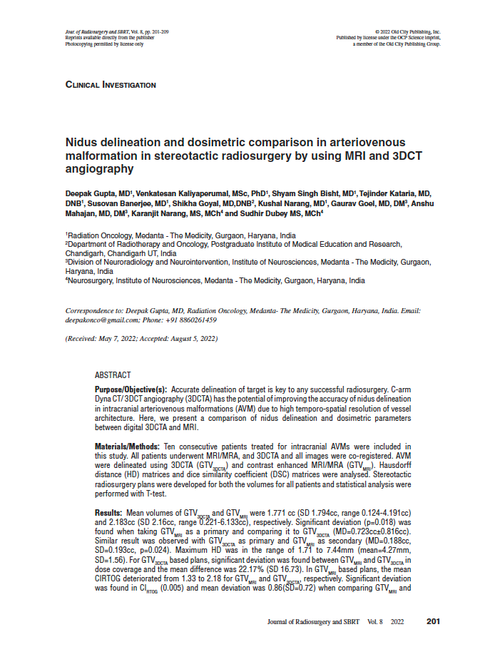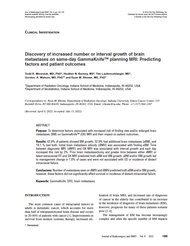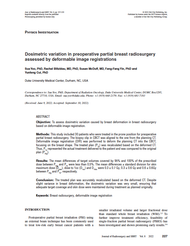- Home
- Journal Contents Downloads
- JRSBRT Downloads
- JRSBRT 8.3, p. 201-209
Product Description
Nidus delineation and dosimetric comparison in arteriovenous malformation in stereotactic radiosurgery by using MRI and 3DCT angiography
Deepak Gupta, Venkatesan Kaliyaperumal, Shyam Singh Bisht, Tejinder Kataria, Susovan Banerjee, Shikha Goyal, Kushal Narang, Gaurav Goel, Anshu Mahajan, Karanjit Narang and Sudhir Dubey
Purpose/Objective(s): Accurate delineation of target is key to any successful radiosurgery. C-arm Dyna CT/ 3DCT angiography (3DCTA) has the potential of improving the accuracy of nidus delineation in intracranial arteriovenous malformations (AVM) due to high temporo-spatial resolution of vessel architecture. Here, we present a comparison of nidus delineation and dosimetric parameters between digital 3DCTA and MRI.
Materials/Methods: Ten consecutive patients treated for intracranial AVMs were included in this study. All patients underwent MRI/MRA, and 3DCTA and all images were co-registered. AVM were delineated using 3DCTA (GTV3DCTA) and contrast enhanced MRI/MRA (GTVMRI). Hausdorff distance (HD) matrices and dice similarity coefficient (DSC) matrices were analysed. Stereotactic radiosurgery plans were developed for both the volumes for all patients and statistical analysis were performed with T-test.
Results: Mean volumes of GTV3DCTA and GTVMRI were 1.771 cc (SD 1.794cc, range 0.124-4.191cc) and 2.183cc (SD 2.16cc, range 0.221-6.133cc), respectively. Significant deviation (p=0.018) was found when taking GTVMRI as a primary and comparing it to GTV3DCTA (MD=0.723cc±0.816cc). Similar result was observed with GTV3DCTA as primary and GTVMRI as secondary (MD=0.188cc, SD=0.193cc, p=0.024). Maximum HD was in the range of 1.71 to 7.44mm (mean=4.27mm, SD=1.56). For GTV3DCTA based plans, significant deviation was found between GTVMRI and GTV3DCTA in dose coverage and the mean difference was 22.17% (SD 16.73). In GTVMRI based plans, the mean CIRTOG deteriorated from 1.33 to 2.18 for GTVMRI and GTV3DCTA, respectively. Significant deviation was found in CIRTOG (0.005) and mean deviation was 0.86(SD=0.72) when comparing GTVMRI and GTV3DCTA. Highly significant (p=0.002) deviation was found in CIPaddick between GTVMRI and GTV3DCTA for GTVMRI based plans with mean difference of 0.26(SD=0.4, for GTVMRI=0.3, GTV3DCTA=0.46).
Conclusion: Nidus volume was significantly altered with the use of 3DCTA compared to that of MRA/MRI images. Multimodality imaging is crucial for accurate target delineation, and successful radiosurgical obliteration of nidus.
Keywords: Nidus, C-arm Dyna CT, 3DCT angiography (3DCTA), arteriovenous malformation, MRA/MRI
After payment has been processed for your order of a digital copy (PDF) of this article, you will see a download link on your completed order page and also receive an email containing a download link. The links, which will enable you to download one copy of the article, will expire after 24 hours.
 Loading... Please wait...
Loading... Please wait...








